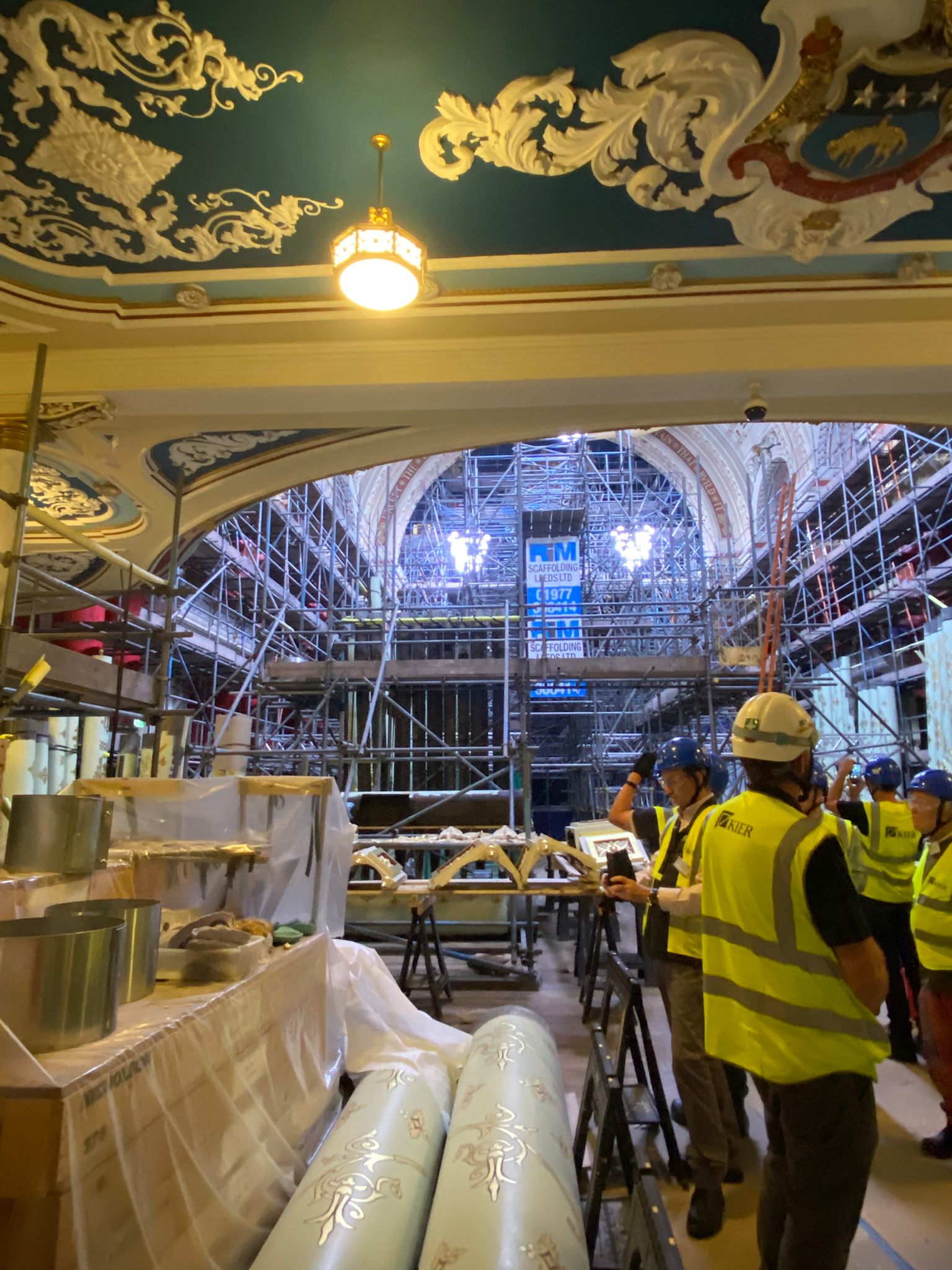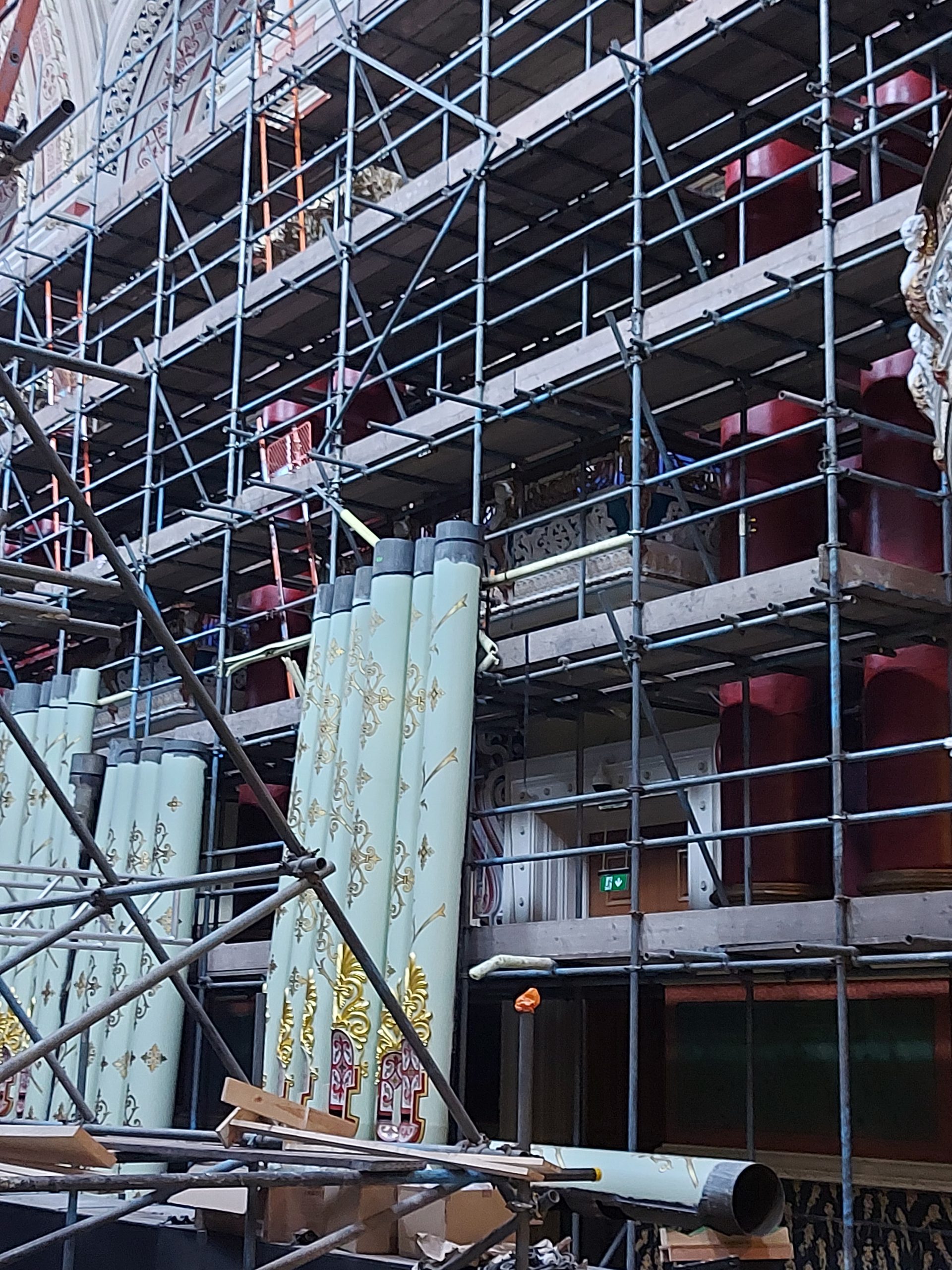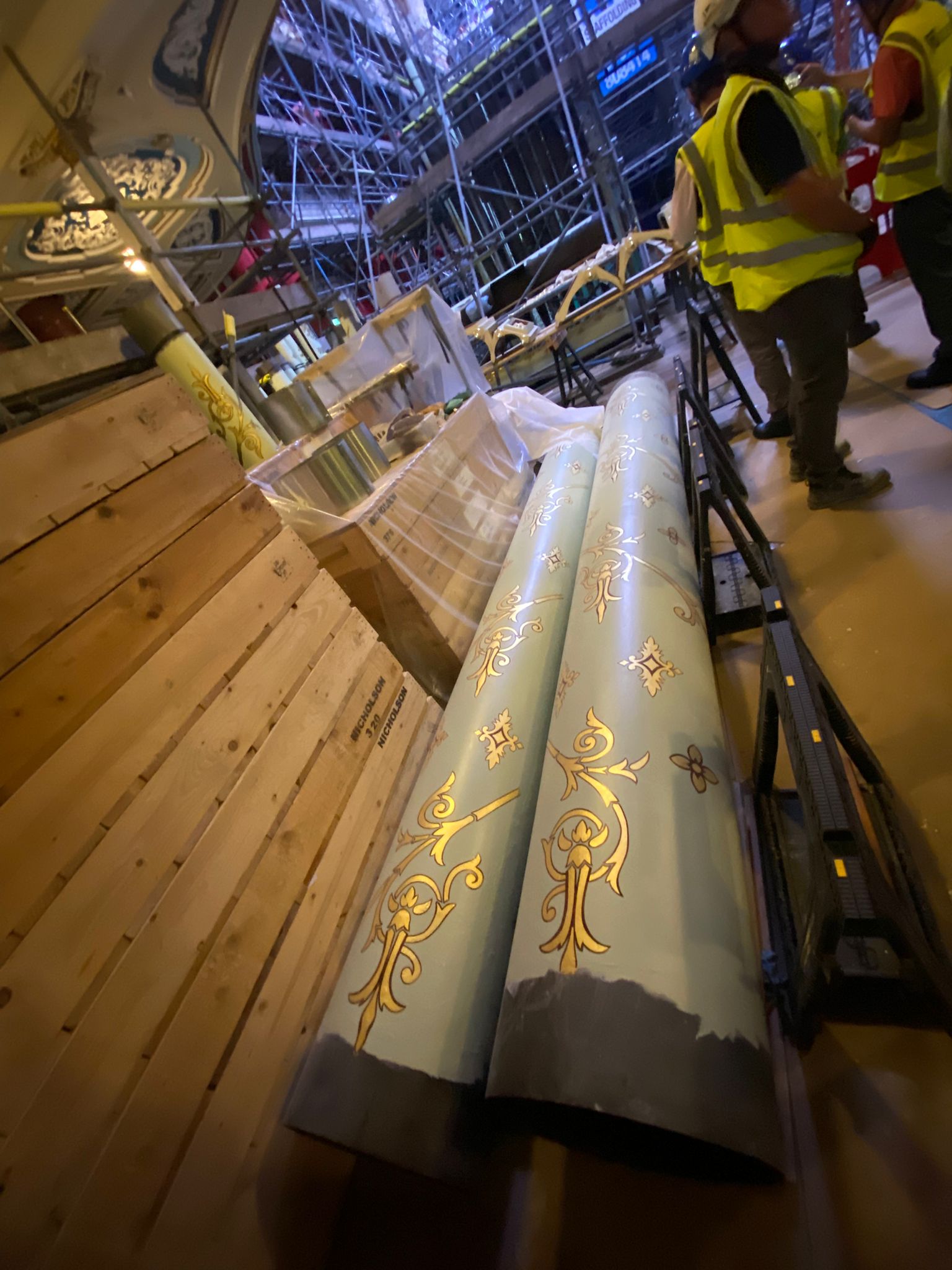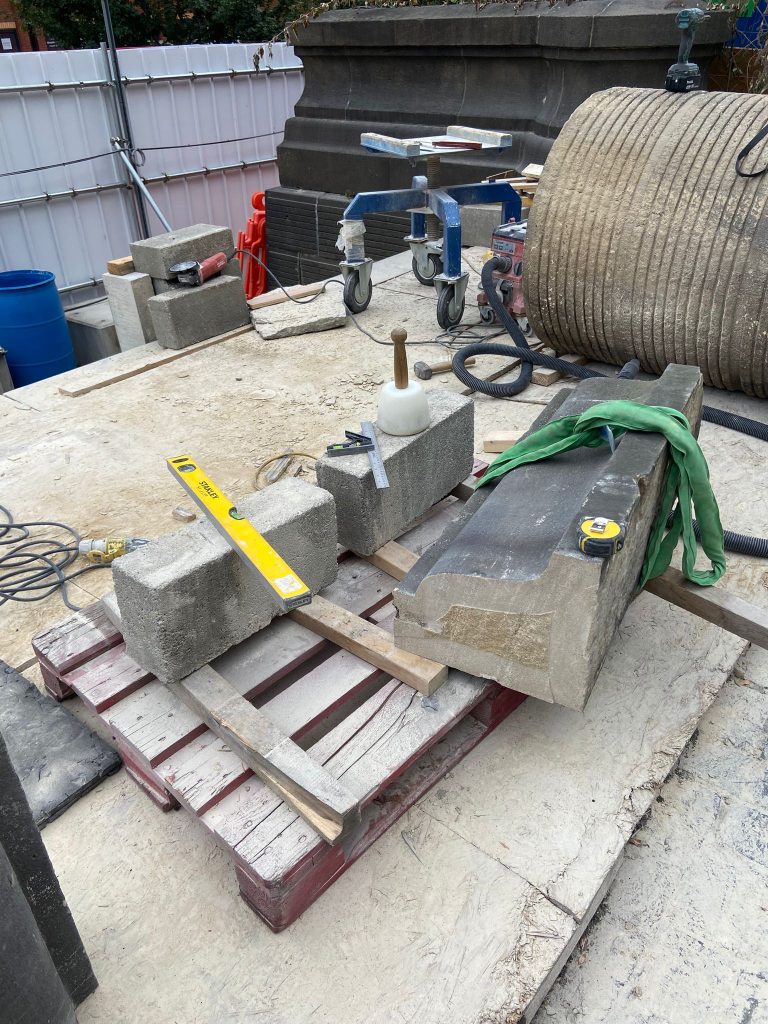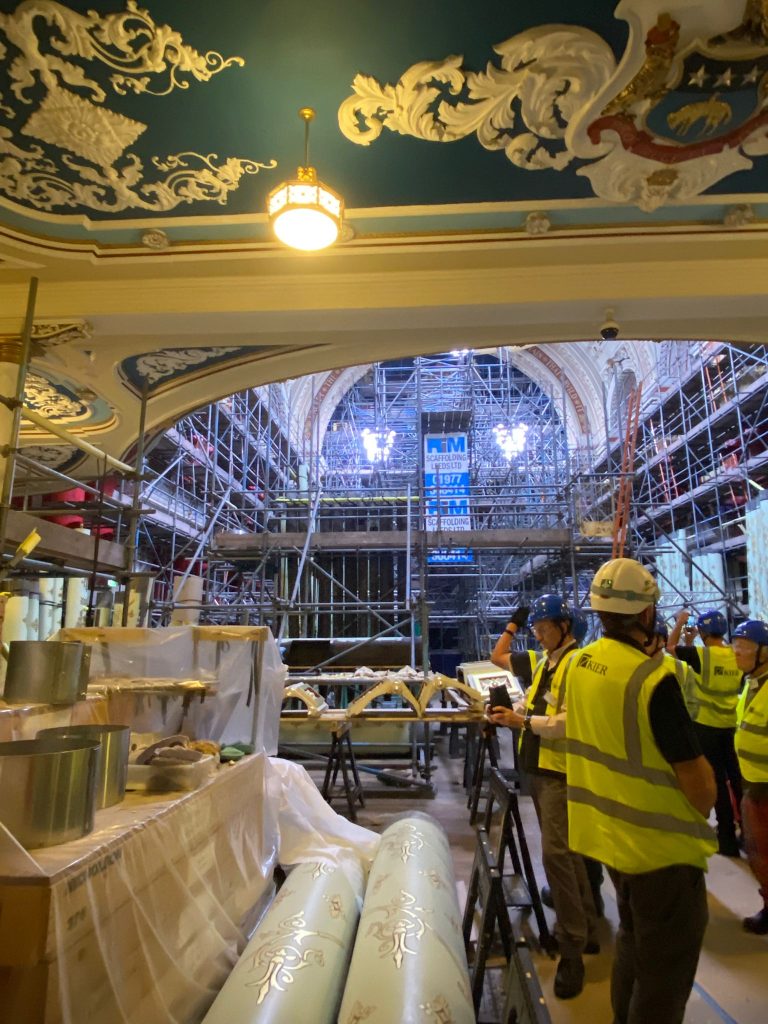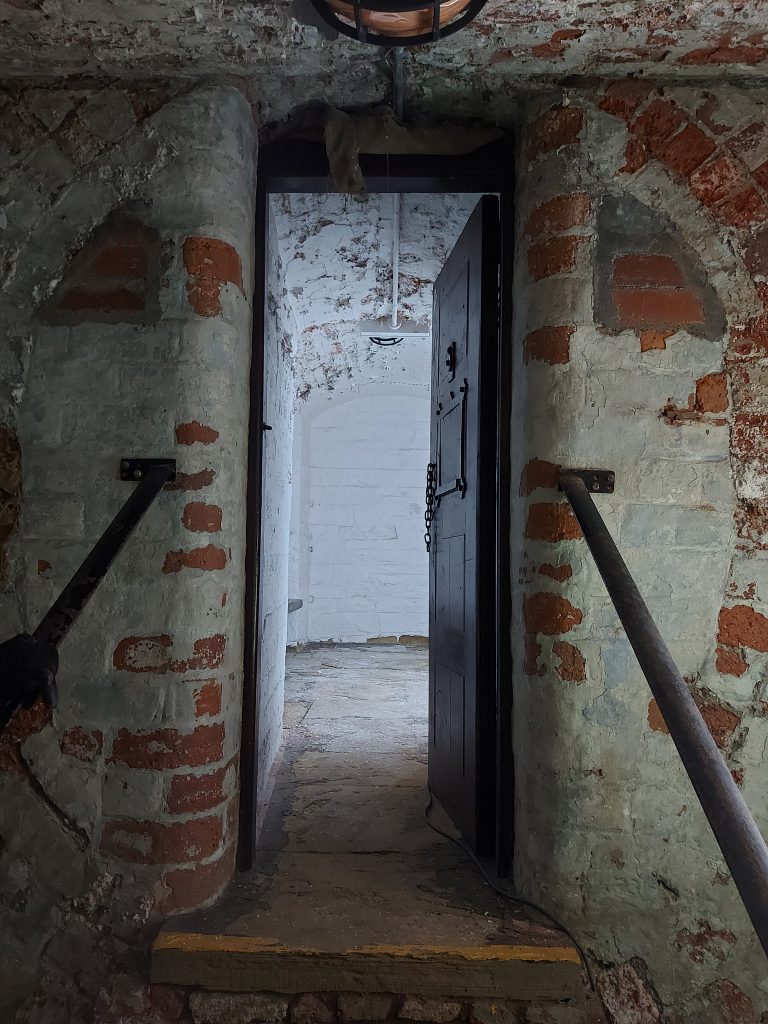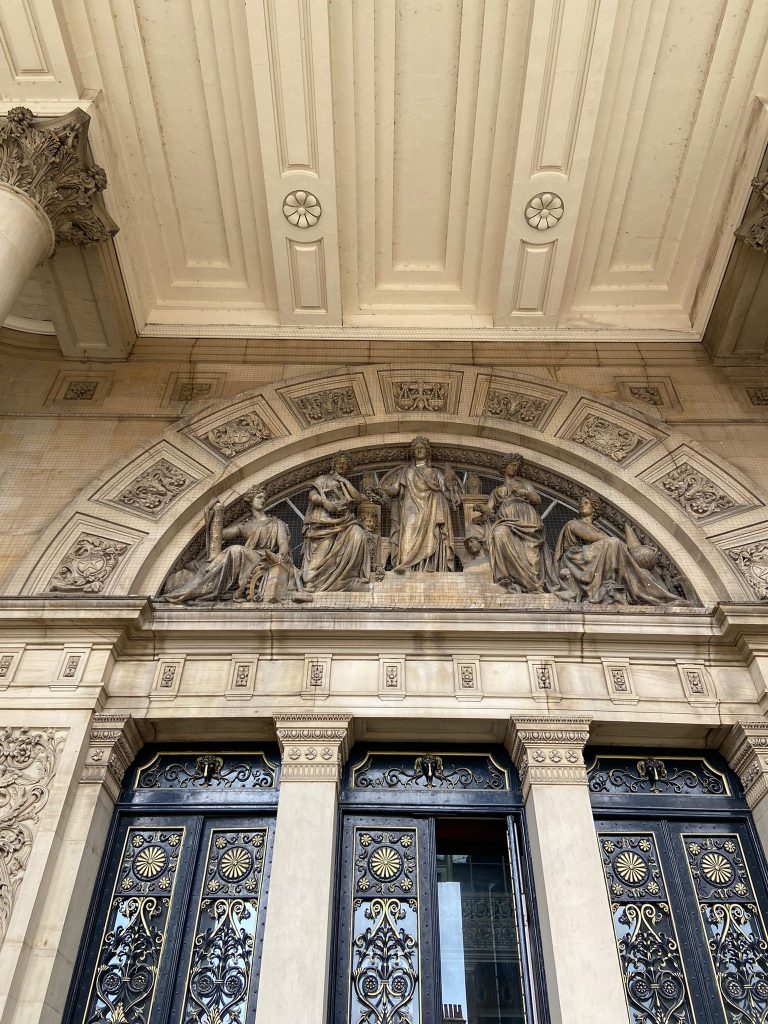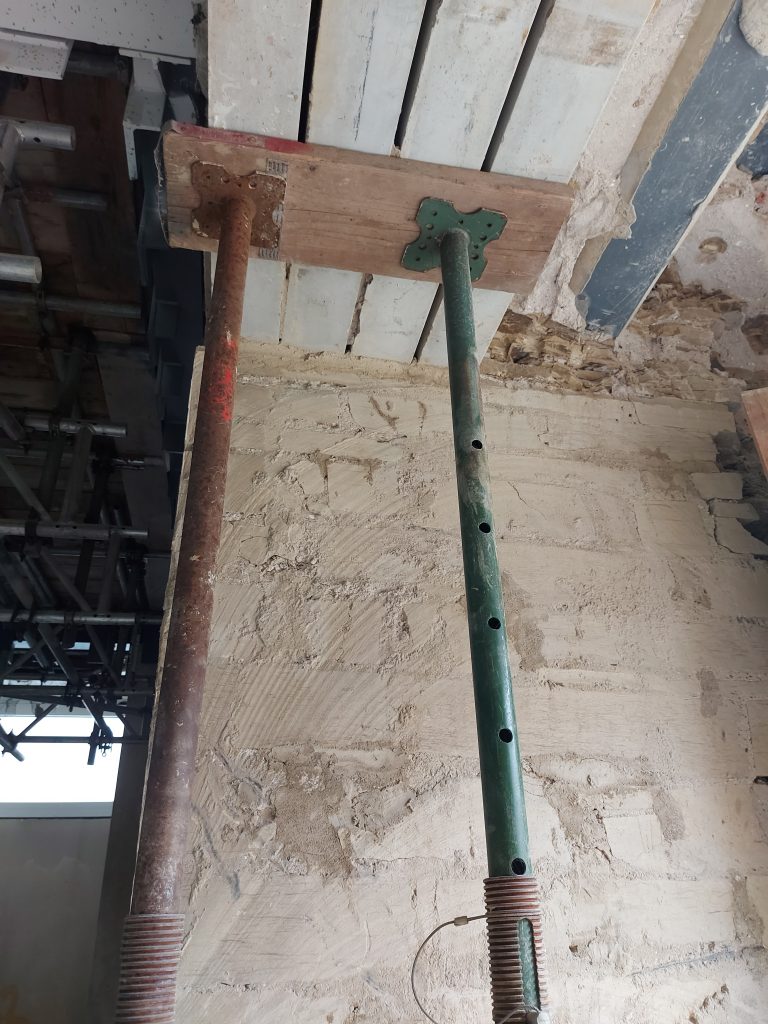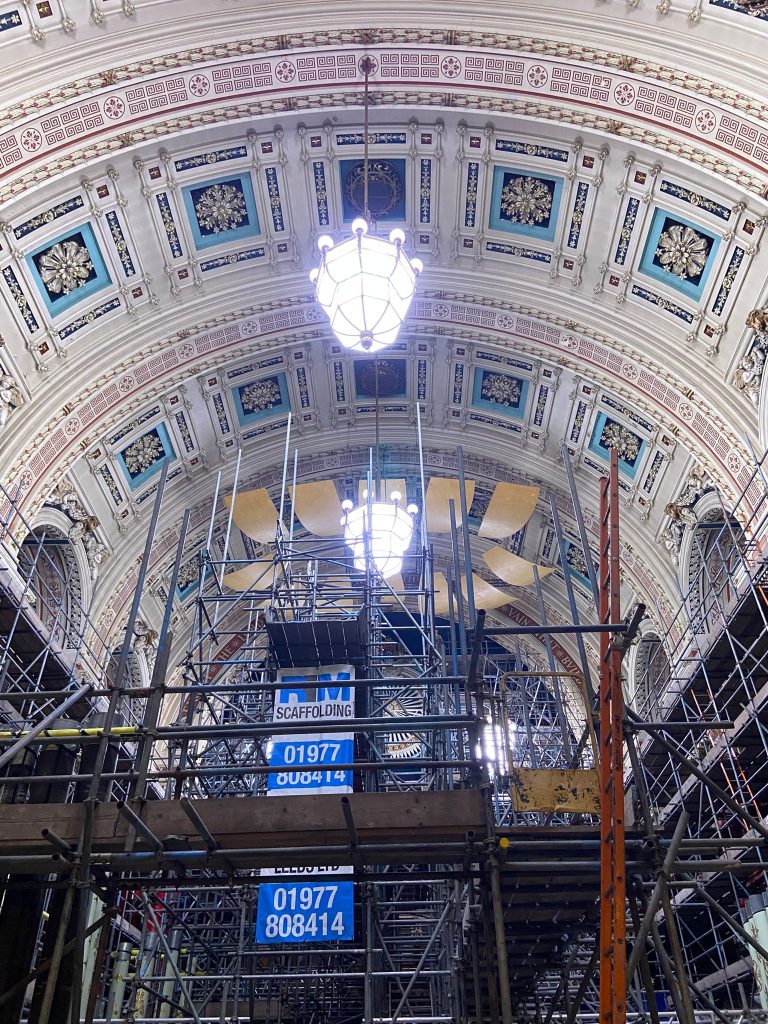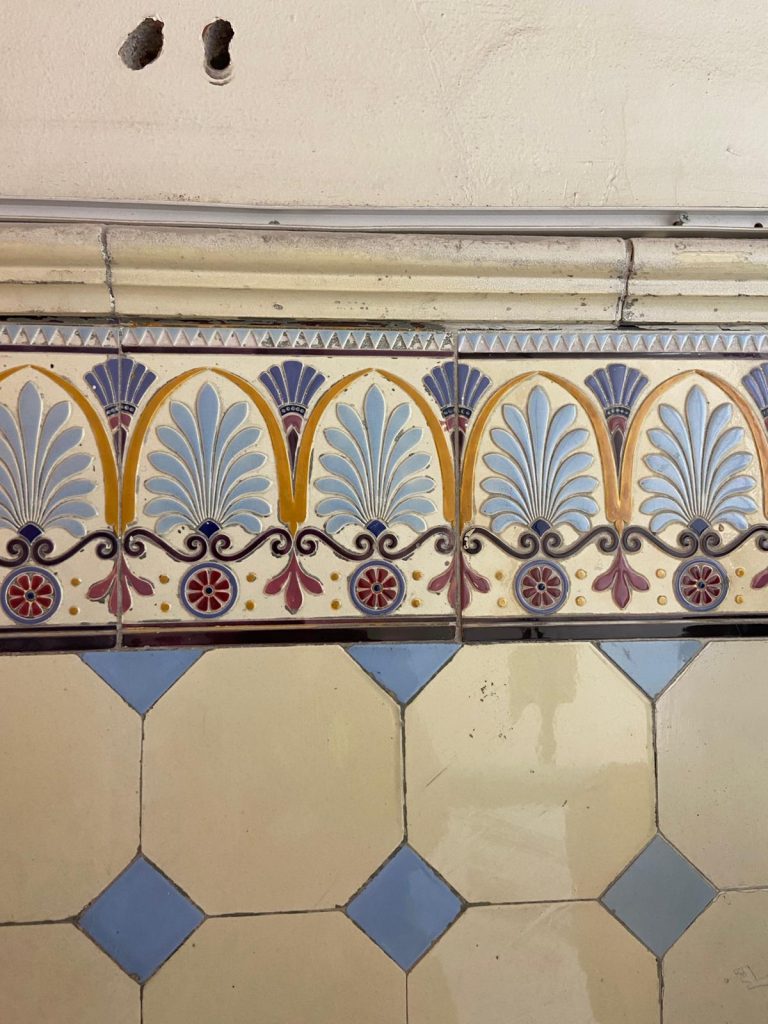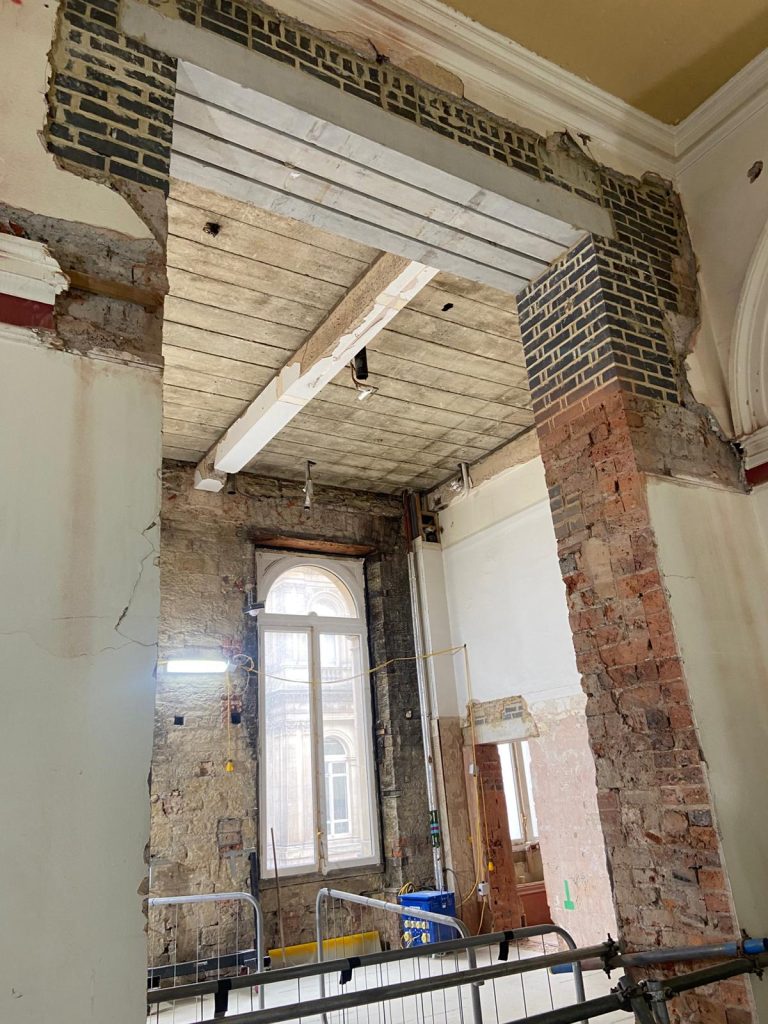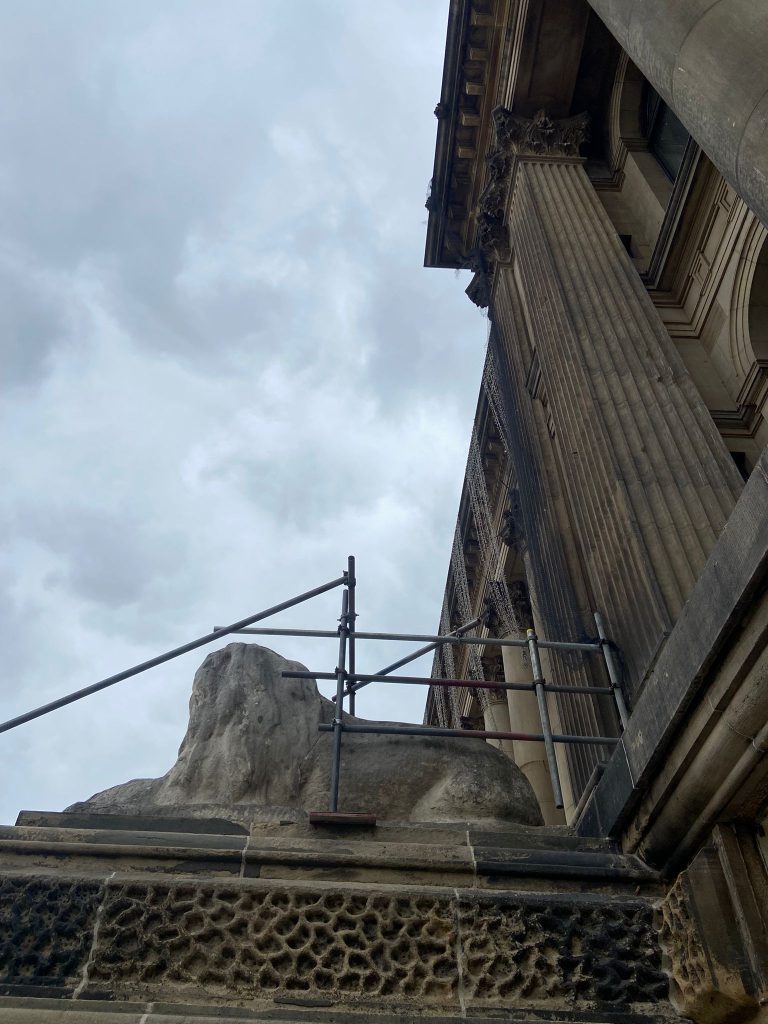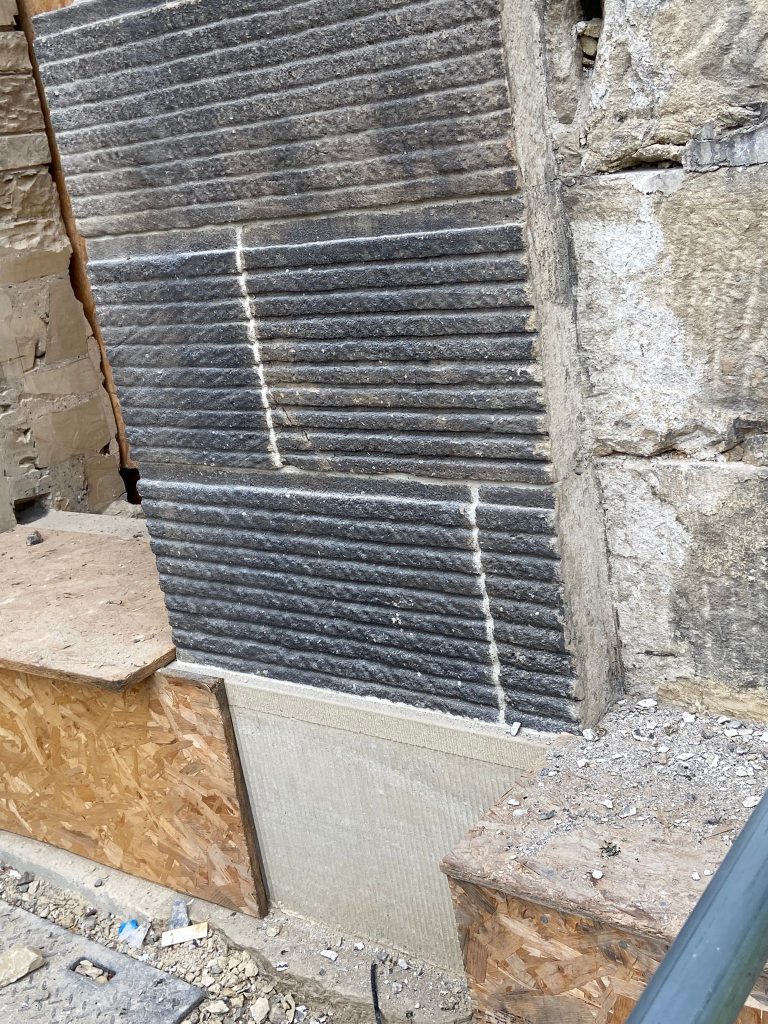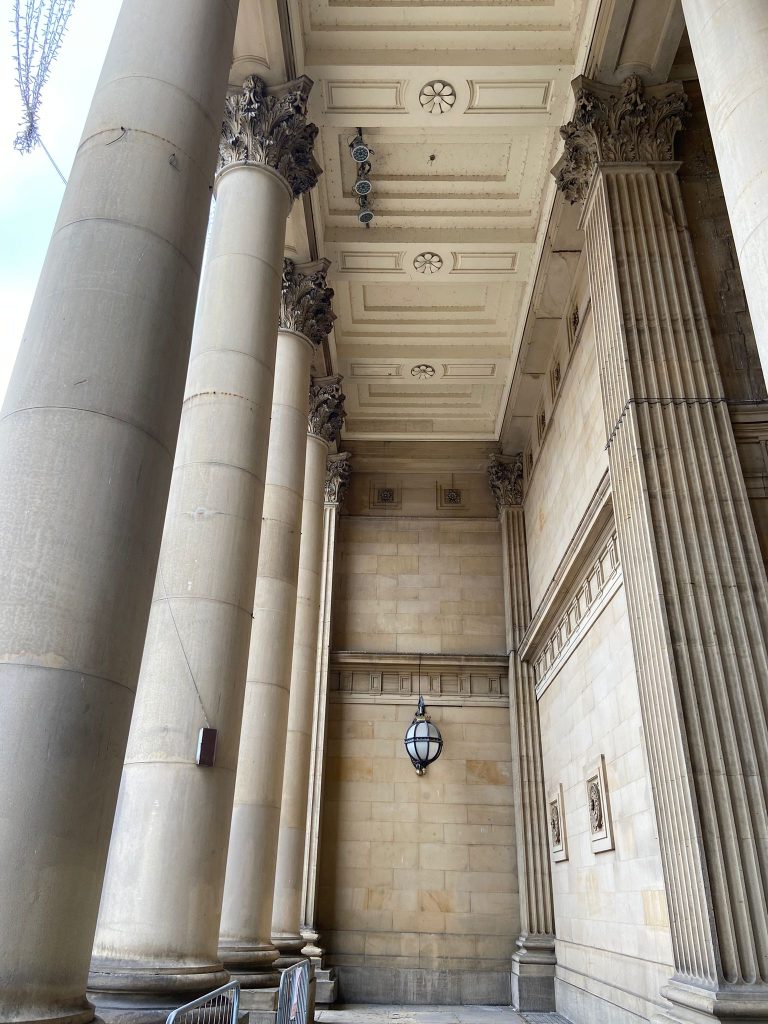Several members of Leeds Civic Trust recently had the privilege of seeing the ongoing restoration efforts at the historic Leeds Town Hall, giving us unique insight into the sometimes frustrating, sometimes idiosyncratic, always enlightening world of heritage restoration. The Victorian building, which of course served as Leeds’ town hall and civic centre for many years, is currently being renovated to serve as a concert hall and music venue, a purpose it has previously served not least due to the humongous organ housed within. To serve this purpose well (and to rescue it from the forced glamour of its 1980s renovation), several changes have been made to the interior design of the building. For instance, the new bar area has been relocated from its previous, rather dingy and depressing sounding location to a more apt one next to some of the building’s stunning fenestration, an area that previously housed several small offices and (no word of a lie) the toilets.
This brings me to some of the interesting changes that are being made to transform the town hall building into a community-focused, artistic space more fitting with our 21st century sensibilities. One of the most major changes, at least in my opinion, is the addition of a proper accessible entrance, something the building was in serious need of. If you ask me, half-metre thick sandstone steps, whilst gorgeous, are barely accessible to able bodied people, let alone somebody in a wheelchair. The building technically had an accessible entrance previously, but it was more of a ‘back door’ affair, not affording the same grandeur as the main entrance.
The new accessible entrance will include an elevator which is being fitted wholesale into the building’s structure, a complicated process which has involved moving the building’s built-in substation. The entrance will be located in the former prisoner check-in area of the town hall dating back to when the building had cells underneath. The symbolism of this was not lost on one of tour guides, John Brown from Page/Park Architects (the same firm that restored Hyde Park Picture House, no less), who viewed the drastic change of function as indicative of the democratisation of the building, allowing everyone the equal ability to access the space in a way that was simply not possible before.
Whilst the previously mentioned changes are fairly obvious and understandable, some other aspects of the renovation are somewhat more esoteric, but no less important. Many of these changes are likely to go unnoticed by casual observers – making the renovation look effortless is partially the goal.
Some changes which amused many of us on the tour were the installation of soundproofing on the wall that separates the toilets from the main concert space – nobody wants a toilet flush interrupting Beethoven’s 5th – as well as the evening of the gateposts, which were uneven from the beginning, but, not wanting to appear to have made them uneven, Page\Park and Kier have fixed them up.
Then there is, of course, undoing the damage from the previous renovation of the 1980s, one that was more concerned with current trends and fashions than with preserving the aesthetic of the building. The current refurbishment is reviving the interior’s original green colour, as well as the former marble paint effects and decorative tiles (where reasonable, such things do not come cheap), replacing the once-fashionable red and gold scheme. The original stone flooring will be restored and exposed, repairing the unfortunate damage caused by several bouts of carpet and linoleum.
In terms of general repairs and refurbishment, many corners inside the building are being filled with moulded plaster, covering up years of scrapes and bashes from all sorts of trolleys and carts, and the wallpaper in the bar area, which had turned brown due to decades of smoking and subsequent varnishing, is being stripped and replaced with a more appropriate salmon pink. The cherry on top of the whole edifice, the organ, is also having its turn, being redone practically from top to bottom.
To sum up, the restoration of Leeds Town Hall is a lesson in what it takes to adapt historical spaces for modern use. Between the accessibility considerations, the small, unseen details that elevate the space and the tasteful return to the building’s former aesthetic intention, I believe that the Town Hall is well on its way to becoming a Leeds must-see. Thanks so much to Kier, Page/Park and Leeds City Council for allowing us access to the premises, and for the comprehensive tour.

